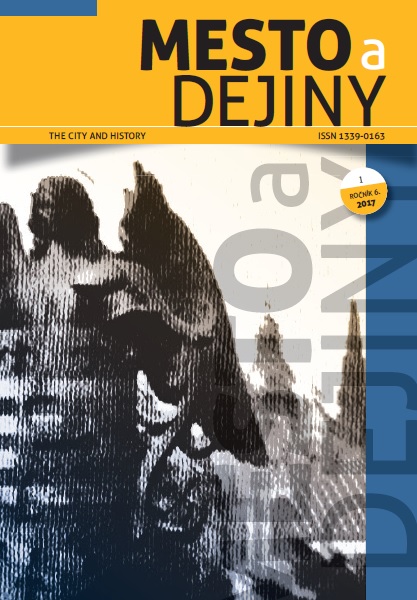Taxíky v systéme verejnej mestskej dopravy so zreteľom na príklad medzivojnovej Bratislavy
Taxicabs in the system of public urban transport with regard on the example of interwar Bratislava
Author(s): Mikuláš JančuraSubject(s): History, Economic history, Local History / Microhistory, Recent History (1900 till today), Interwar Period (1920 - 1939)
Published by: Univerzita Pavla Jozefa Šafárika v Košiciach
Keywords: Taxi services; City public transport; Slovakia; Bratislava; Interwar period;
Summary/Abstract: One of the significant features of the city in the inter-war period was a relatively developed public transport system. Types, mode of operation, network density, timetable, rates and types of used vehicles have more or less to meet the legislative, economic, economic and social requirements imposed on this sector. Last but not least, the demographic and urban factors played a key role in relation to the character of public transport, respectively, the characteristics of which city. In Slovakia, the situation was more problematic given its economic and economic specifics. However, it is also possible to talk about relatively integrated and also developing urban transport systems in relation to interwar Slovakia. With the gradual development of motoring, buses and also passenger cars began to appear in addition to trams, omnibuses and carriages, but that was not a necessary rule. During the inter-war period, bus transport in Slovakia was accompanied by numerous problems, mainly related to the economic aspect of its operation and the insufficient fleet. Also, passenger cars were luxury and generally inaccessible goods in Slovakia. Due to various technical and legislative-economic measures, at the turn of the 1920s and 1930s, cars became more accessible and they became more penetrating the wider structure of society and more and more everyday use. An exemplary example is trade-related entrepreneurship, with some of the "motoring" business sectors in Slovakia being dynamically developing a taxi, which has become an effective complement to urban and suburban transport. In the present study, special attention is paid to Bratislava in the context of the development of trade taxis and its position in the public transport system in Slovakia for several reasons. Bratislava was (and is) the most demographic and urbanized city in Slovakia. It had one of the oldest public transport systems within its territory, in terms of typology, respectively, the used riding top used by several types of means of transport, from carriages, tramcars, trams, omnibuses, trolleybuses, buses to "propeller", transporting passengers between the banks of the Danube river.In connection with its motorisation, taxis began to penetrate into its system with number of own specifications. The aim of the study is, on the example of the interwar Bratislava, to bring the development of the freight taxis with a view to its legislative definition and practice, while defining, respectively, to reflect on the specific position of taxis in the complex public transport system in the interwar period under review.
Journal: The City and History (Mesto a dejiny until 2019)
- Issue Year: 6/2017
- Issue No: 1
- Page Range: 67-78
- Page Count: 12
- Language: Slovak

